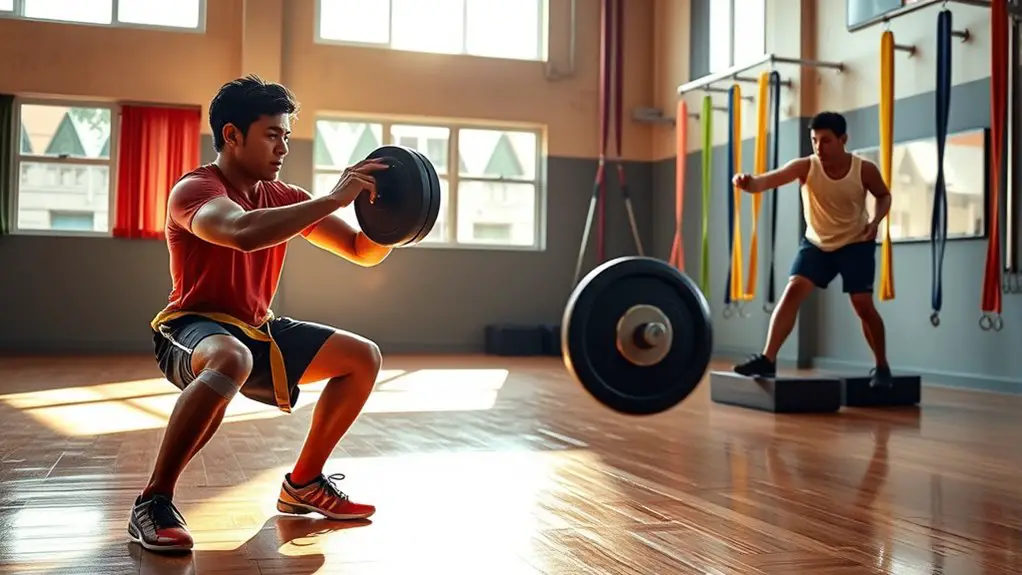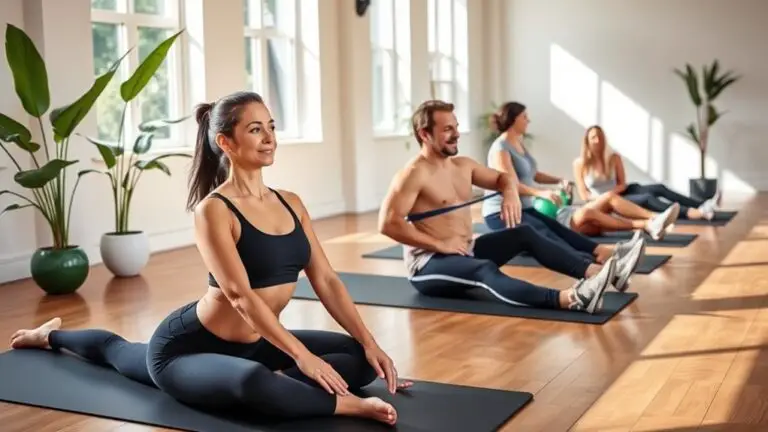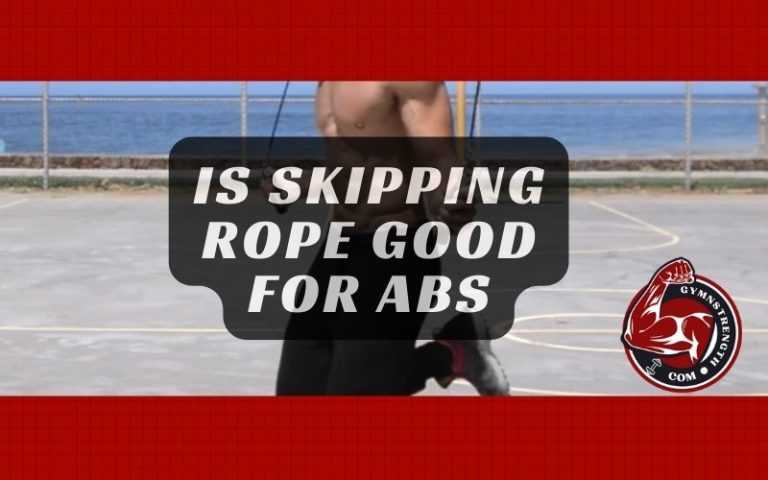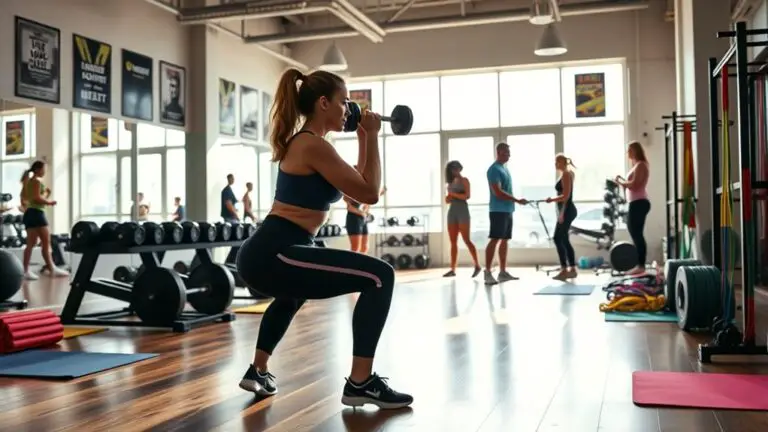The Best Gym Workouts for Soccer Players

To boost your soccer performance, focus on strength training with squats, deadlifts, and bench presses. Add agility drills like ladder movements and cone sprints to increase speed and coordination. Don’t forget endurance workouts, such as long-distance running, to build stamina. Incorporating flexibility exercises enhances your range of motion, while core strengthening improves balance. Plyometric training, like box jumps, develops explosive power. By mastering these workouts, you’ll be ready for on-field success and discover more effective strategies.
Strength Training for Soccer Players

When it comes to enhancing your performance on the soccer field, strength training is essential. Incorporating powerlifting techniques can help you build explosive strength, which is vital for powerful kicks and quick sprints. Focus on squats, deadlifts, and bench presses while ensuring you maintain proper form to avoid injuries.
Additionally, resistance band workouts are a fantastic way to improve your strength safely. They provide variable resistance, allowing you to target specific muscle groups without straining your joints. Exercises like banded squats, lateral walks, and shoulder presses can enhance your overall stability and power.
Remember to start with lighter resistance and gradually increase as you become more comfortable. Always warm up before your workouts and cool down afterward to reduce the risk of injury. By combining these strength training methods, you’ll be better prepared to perform at your best on the soccer field.
Agility Drills to Enhance Speed
Building strength is just one piece of the puzzle; agility drills are equally important for enhancing your speed on the soccer field. Incorporating ladder drills and cone sprints into your training can help improve your footwork and reaction time, essential for outmaneuvering opponents.
Here’s a quick reference table for effective agility drills:
| Drill | Description | Sets/Reps |
|---|---|---|
| Ladder Drills | Quick foot movements through a ladder on the ground | 3 sets of 30 sec |
| Cone Sprints | Sprinting between cones placed in various patterns | 5 sets of 20 sec |
| Lateral Hops | Jump side to side over a line or small barrier | 3 sets of 15 reps |
| T-Drills | Sprint, shuffle, and backpedal in a T-shape pattern | 4 sets |
| Box Drills | Create a square, sprint to each corner | 5 sets |
These drills not only boost speed but also enhance overall agility while ensuring you stay safe and injury-free.
Endurance Workouts for Stamina

To boost your stamina on the soccer field, endurance workouts are essential. High-intensity interval training and long-distance running sessions can help you build the stamina you need to outlast your opponents. Let’s explore how these workouts can enhance your performance.
High-Intensity Interval Training
High-Intensity Interval Training (HIIT) is a game-changer for soccer players looking to boost their endurance and stamina. By incorporating high intensity circuits into your routine, you’ll enhance your metabolic conditioning, allowing for quicker recovery during matches. A typical HIIT session involves short bursts of intense exercise followed by brief rest periods, helping your body adapt to the demands of the game. You can mix exercises like sprints, burpees, and jump squats to keep it engaging. Just remember to warm up properly and listen to your body to avoid injury. Start with manageable intervals and gradually increase intensity as you build confidence. This approach not only improves your fitness but also sharpens your performance on the field.
Long-Distance Running Sessions
While HIIT workouts are fantastic for quick bursts of energy, long-distance running sessions play an essential role in developing the stamina soccer players need for those extended matches. These workouts help you build endurance and improve your overall performance on the field.
Here are some long-distance running benefits and techniques to keep in mind:
- Gradual Build-Up: Start with shorter distances and gradually increase your mileage.
- Proper Footwear: Invest in quality running shoes for injury prevention.
- Pace Yourself: Maintain a steady pace to avoid burnout.
- Hydration: Stay well-hydrated before, during, and after your runs.
- Stretching: Incorporate dynamic stretches to enhance flexibility and reduce injury risk.
Flexibility Exercises to Improve Range of Motion
Improving your flexibility is vital for enhancing your range of motion, especially as a soccer player. Incorporating both dynamic stretches and static stretches into your routine can help prevent injuries and improve performance on the field. Before training or games, focus on dynamic stretches like leg swings and walking lunges to warm up your muscles. These movements prepare your body for action and increase blood flow.
After your workout, it’s important to include static stretches such as hamstring stretches and quadriceps stretches. Holding these stretches for 20-30 seconds helps elongate the muscles and maintain flexibility. Remember to breathe deeply and avoid bouncing, as this can lead to strain.
Always listen to your body and don’t push past your limits. Gradually increasing your flexibility will not only enhance your performance but also keep you safe from injuries throughout the season. Prioritize these exercises to stay at the top of your game.
Core Strengthening for Better Balance

To excel on the soccer field, having a strong core is essential for maintaining balance and stability during play. Core strengthening not only helps in your performance but also reduces the risk of injuries. Incorporating balance exercises and stability training into your routine can greatly enhance your game.
Here are some effective core strengthening exercises:
- Planks: Hold a plank position to engage your entire core.
- Russian Twists: This exercise improves rotational strength and balance.
- Bicycle Crunches: Great for working the obliques while boosting stability.
- Single-Leg Deadlifts: Focuses on balance while strengthening your core.
- Medicine Ball Throws: Engage your core and improve coordination.
Additionally, incorporating jump rope workouts can enhance your core strength and coordination while providing a fun and effective way to exercise.
Plyometric Training for Explosive Power
Plyometric training is essential for soccer players looking to develop explosive power, as it enhances your ability to sprint, jump, and change direction quickly on the field. Incorporating jump training and explosive drills into your workout routine can lead to significant improvements in performance. Always prioritize safety; start with lower-intensity exercises and gradually increase the difficulty as you build strength.
| Exercise | Description |
|---|---|
| Box Jumps | Jump onto a stable surface, focusing on landing softly. |
| Depth Jumps | Step off a box and jump immediately upon landing. |
| Lateral Bounds | Jump side to side, maintaining balance and control. |
These exercises not only boost your power but also improve your overall agility. Remember to warm up properly and pay attention to your body to avoid injury. Consistent plyometric training can make a significant difference in your game.
Functional Movements to Mimic Game Situations
While training in the gym is essential, incorporating functional movements that mimic game situations can elevate your performance on the field. These exercises help you develop the necessary movement patterns for effective game simulation, ensuring you’re prepared for the dynamic nature of soccer.
Here are some key movements to reflect upon:
- Lateral lunges: Enhance side-to-side movement for better agility.
- Medicine ball throws: Build upper body strength and simulate passing.
- Single-leg deadlifts: Improve balance and stability, vital for quick changes in direction.
- Box jumps: Develop explosive power and simulate jumping for headers.
- Agility ladder drills: Increase foot speed and coordination for quick plays.
Recovery Strategies to Prevent Injuries
When it comes to preventing injuries, recovery strategies are key. You’ll want to prioritize stretching, hydration, and proper nutrition to keep your body in top shape. These elements not only aid in recovery but also enhance your overall performance on the field.
Importance of Stretching
Stretching plays an essential role in a soccer player’s training regimen, serving as an important recovery strategy to prevent injuries. Incorporating dynamic warm ups before your workouts prepares your muscles for action, while post workout stretches help in recovery. Here’s why you shouldn’t skip stretching:
- Enhances flexibility, improving your range of motion
- Reduces muscle tension, leading to better performance
- Aids in recovery, helping your body bounce back faster
- Lowers the risk of injuries, keeping you on the field longer
- Promotes blood circulation, delivering nutrients to your muscles
Hydration and Nutrition
Hydration and nutrition are essential for soccer players, especially when it comes to recovery and injury prevention. Implementing effective hydration strategies helps maintain ideal performance and prevents cramps or fatigue. Drink water regularly during practice and matches, and consider electrolyte drinks for prolonged exertion.
Nutrition timing is equally vital; fueling your body with the right nutrients before and after workouts aids recovery. Aim for a balanced meal rich in carbohydrates and protein within 30 minutes post-exercise to replenish glycogen stores and repair muscle damage.
Frequently Asked Questions
How Often Should Soccer Players Work Out Each Week?
When considering workout frequency, you should aim for 3 to 5 sessions per week, depending on your training schedule and fitness goals. It’s important to balance strength, endurance, and recovery to avoid injuries. Listen to your body; if you’re feeling fatigued, don’t hesitate to take a rest day. Consistency is key, but so is safety—ensure you’re allowing enough time for recovery between intense workouts to keep yourself in top shape.
What Should I Eat Before a Gym Workout?
Before a gym workout, you want to fuel your body effectively, not overload it. Think of pre workout nutrition as a balance between energy and comfort. An ideal meal could be a banana with a scoop of peanut butter or some oatmeal topped with berries. These choices provide quick energy without feeling heavy. Remember, it’s essential to listen to your body and make sure you’re not eating too close to your workout time for safety.
How Can I Track My Progress Effectively?
To track your progress effectively, start by using a workout journal. Document your exercises, sets, and reps, noting any changes over time. Incorporate progress metrics like weight lifted, endurance levels, or body measurements to see how far you’ve come. Regularly reviewing your journal helps you stay motivated and guarantees you’re training safely. Remember, consistency is key, so make it a habit to log your workouts and celebrate your achievements along the way!
Should I Prioritize Strength or Endurance Training?
When it comes to training, think of your body as a finely tuned machine. You can’t ignore either strength or endurance; they’re two sides of the same coin. Strength benefits your power, while endurance techniques keep you going like a well-oiled engine. Prioritize based on your goals—if you want explosive speed, focus on strength. If it’s stamina you seek, lean towards endurance. Just remember to balance both for a safe and effective approach!
What Are the Signs of Overtraining to Watch For?
When you’re pushing your limits, it’s essential to recognize the signs of overtraining. Fatigue indicators like persistent tiredness, decreased performance, and irritability can signal that your body needs a break. If you notice these symptoms, it’s time to implement recovery strategies, such as taking rest days, improving your nutrition, and getting adequate sleep. Listening to your body can help prevent injuries and guarantee you stay safe while reaching your fitness goals.





